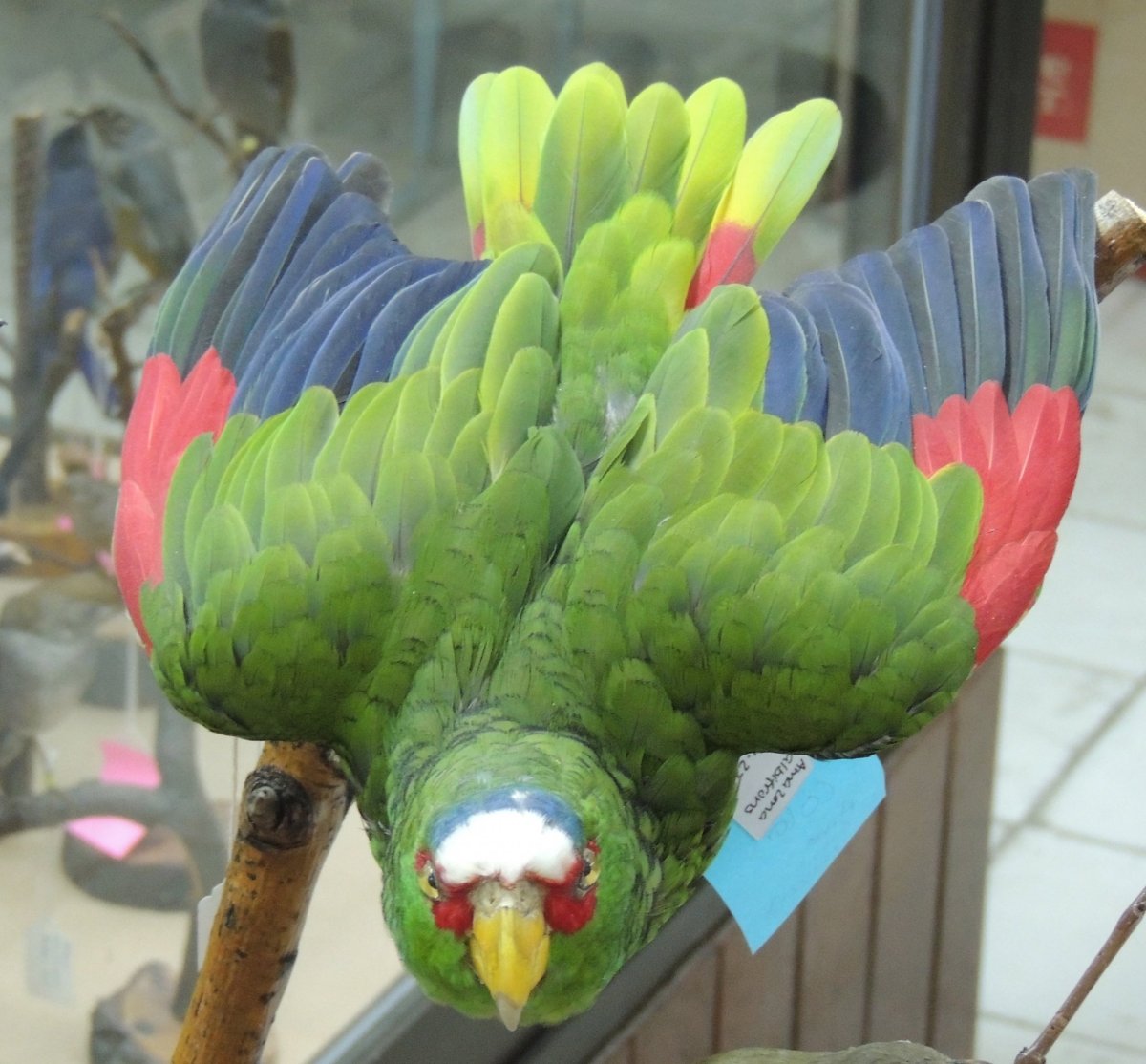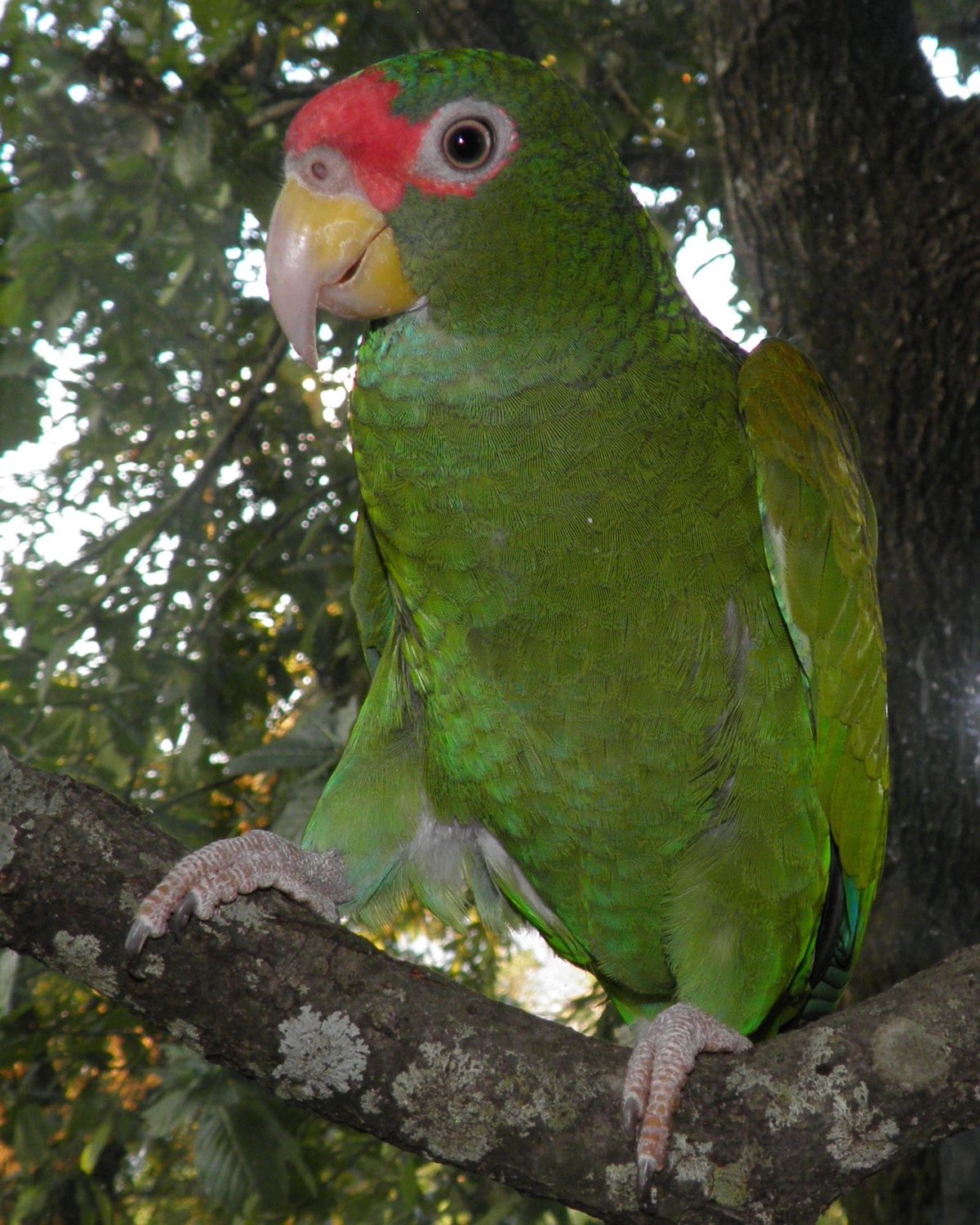The term parrot encompasses many bird species. A group given the scientific name Amazona includes about 30 species of parrots native to the New World. With the discovery of a new parrot species in Mexico, that group just got bigger. And louder.
Researchers from the United States, Poland and Mexico have just reported their discovery of a new species of parrot living in the Yucatán Peninsula. Now named the Blue-winged Amazon, this parrot is distinctly different in both appearance and call than its winged compatriots.

The Blue-winged Amazon has a green crown, whereas others in the Amazona category have blue crowns. It lives in flocks of fewer than 12 birds that tend to stay together in their own parrot cliques. Like other Amazona parrots, it eats seeds, fruits, flowers and leaves from the tree canopy of its tropical home.
The call, which is loud and sharp, is one of its most distinguishing features. Researchers say its repetitive and monotone squawk, made during flight, is more like a hawk than a parrot. When it's resting, the Blue-winged Amazon chirps a more mellow and prolonged call. (Listen to audio recordings of this parrot in the video above.)
The species was discovered during a 2014 expedition to a remote area of the Yucatán Peninsula, south of Bencanchén. Miguel A. Gómez Garza, veterinarian and professor at Autonomous University of Nuevo Leon in Mexico, was in the region gathering data for his book, Loros de México, (Parrots of Mexico), which was published last year. He spotted parrots with a coloration unlike anything he'd seen before. The overall appearance fit the general description of the Amazona parrot group, six species of which are native to Mexico, with differences between the males and females that also matched the bigger group.

But the differences also were striking. In particular, the call is loud and not very parrot-like. A DNA analysis confirmed that the species, which was given the scientific name Amazona gomezgarzai, is distinct and previously unidentified. The researchers also confirmed that no specimens held in six museums with ample Mexican bird collections were actually this newly cataloged species. "We did not find any specimens with characteristics of the new taxon," the authors write.
Gómez Garza was surprised to find this new species because, his co-author Pawel Mackiewicz told Newsweek, the place of its discovery has been visited many times by other investigators and bird watchers. "Miguel paid attention to a very disparate sound made by a small group of birds that arrived to a tree in order to eat its pods," said Mackiewicz. "Watching them in flight, he discerned the beautiful and brilliant blue color of their wings." He returned to the region several times to observe and document their behavior.
With support from the Procuraduria Federal de Protección al Ambiente, Mexico's office for environmental protection, Gómez Garza transported two species, one male and one female, to his home base.
A further analysis revealed that this new species emerged about 120,000 years ago, which is considered to be recent. The researchers believe its ancestor is Amazona albifrons, also known as the White-fronted parrot.
Mexico is home to 23 Amazona species, six of which are native to that land. Like other parrots, the new species is listed as "critically endangered" under the International Union for the Conservation of Nature. In their paper, the researchers have not provided the exact location where the birds were found due to the conservation risks now known with such public disclosures. Recent reports have urged researchers to keep such locations secret because poachers have been reading scientific papers to find promising hunting grounds.
No conservation program for this new species is in place yet, but the researchers say that its rarity and limited range should make it a priority for such efforts. "Finding this new species implies that we know very little about our natural environment," says Mackiewicz. "Its protection is necessary in order to not lose hidden and undiscovered species."
Uncommon Knowledge
Newsweek is committed to challenging conventional wisdom and finding connections in the search for common ground.
Newsweek is committed to challenging conventional wisdom and finding connections in the search for common ground.
About the writer
Jessica Wapner is the science editor for Newsweek. She works with a talented team of journalists who tackle the full spectrum ... Read more
To read how Newsweek uses AI as a newsroom tool, Click here.








